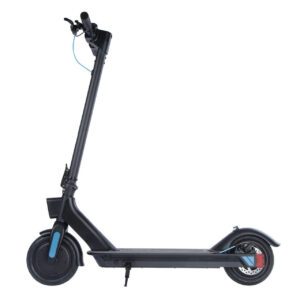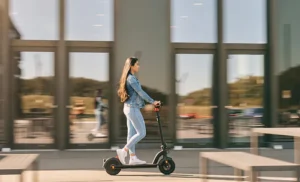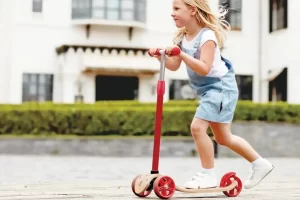Ensuring the safety of children while they are out scootering is of utmost importance. With the popularity of scootering on the rise, it is vital to instill good safety practices in young riders. Whether they are using a traditional kick scooter or an electric one, there are specific measures that can be taken to protect them from potential accidents. In this blog post, we will discuss the best safety practices for kids when scootering, including the importance of wearing protective gear, understanding road rules, and choosing safe riding locations. By implementing these practices, it is possible to minimize the risks associated with scootering and promote a safe and enjoyable experience for children.
Table of Contents
ToggleUnderstanding Scooter Safety
As kids scootering becomes increasingly popular, it’s important for parents and caregivers to understand the best safety practices for ensuring their children’s well-being. By understanding the potential risks associated with scootering and the age-appropriate safety measures, parents can help their children enjoy this activity safely.

Types of Scooters and Their Risks
There are various types of scooters available, from traditional kick scooters to electric scooters. Each type comes with its own set of risks, including falls, collisions, and potential electrical malfunctions. It’s important for parents to carefully consider the potential risks associated with each type of scooter and choose the option that aligns with their child’s age, experience, and skill level. The table below breaks down the risks associated with each type of scooter, providing a comprehensive overview for parents to reference.
- Kick Scooter
- Electric Scooter
- Three-Wheeled Scooter
- Foldable Scooter
- Off-Road Scooter
Age-Appropriate Scooter Safety
Types of scooters suitable for different age groups vary. For example, a kick scooter with a wide base and extra stability might be more suitable for younger kids, while older kids with more experience might be ready to handle the speed and control required for an electric scooter. As parents, it’s essential to choose a scooter that aligns with their child’s age and skill level, and to enforce age-appropriate safety measures accordingly.
It’s crucial to consider the physical and cognitive capabilities of kids when determining the right scooter and safety measures. By providing age-appropriate supervision and guidance, parents can help their children build confidence and ensure their safety while scootering. This includes regularly assessing their child’s ability to handle the scooter, as well as providing the necessary safety gear such as helmets, knee pads, and elbow pads.
Essential Safety Gear
Obviously, when it comes to scootering, safety should be the number one priority for kids. Ensuring they have the appropriate safety gear can help prevent accidents and protect them from serious injury.
Helmets: Types and Proper Fitment
When it comes to helmets, there are different types to choose from, including traditional hard-shell helmets, soft-shell helmets, and multi-sport helmets. The most important factor when selecting a helmet is ensuring proper fitment. To determine the correct size, measure the circumference of the child’s head and select a helmet that fits snugly without being too tight. It’s important for the helmet to sit level on the head, with the front edge no more than an inch above the eyebrows. The chin strap should be adjusted so that only one or two fingers can fit between the strap and the chin. This will prevent the helmet from sliding around during a fall.
- Choose the right type of helmet
- Proper fitment is crucial
- Helmets should sit level on the head
- Chin strap should be snug but not uncomfortable
- Helmet should not slide during a fall
This ensures that the helmet stays in place during a fall, providing maximum protection for the child.
Additional Protective Equipment
With scootering, it’s not just the head that needs protection. Elbow and knee pads are essential for preventing scrapes and bruises in the event of a fall. Wrist guards can also provide added support and protection for kids, especially as they are learning to balance and maneuver the scooter. When selecting these additional protective equipment, ensure a proper fit and comfort for the child to encourage consistent use.
Types of additional protective equipment include elbow and knee pads, as well as wrist guards. These accessories provide added protection for the child’s joints and wrists, preventing injuries in case of a fall.
Best Practices for Safe Scootering
Despite being a fun and popular activity for kids, scooter riding can pose certain safety risks if proper precautions are not taken. To ensure a safe and enjoyable experience, it is important for kids to adhere to the best safety practices while scootering.
Pre-ride Safety Checks
Preride safety checks are crucial to ensure the scooter is in good working condition before each ride. Kids should inspect the brakes, wheels, handlebars, and overall stability of the scooter. It is also important to check for any loose or damaged parts that may affect the safety of the ride. Encouraging regular maintenance and repairs for scooters will help prevent accidents due to mechanical failures.
Rules of the Road and Environment Awareness
Scootering in public areas requires a good understanding of road safety rules and environmental awareness. Kids should be taught to stay on the sidewalk whenever possible and to look out for obstacles, pedestrians, and other vehicles. It is important to teach them to be mindful of their surroundings and to always yield to oncoming pedestrians. Scootering in high-traffic areas or congested streets should be avoided to minimize the risk of collisions.
For instance, teaching kids to use hand signals when turning or stopping, as well as reminding them to always look both ways before crossing a street, can significantly reduce the risk of accidents.
Educating Your Child on Scooter Safety
Your child’s safety is of utmost importance, especially when it comes to activities like scootering. Educating your child on scooter safety is crucial in preventing accidents and ensuring they have a fun and enjoyable experience.
Importance of Supervision and Role Modeling
With the right supervision and role modeling, children can learn valuable safety practices that will stay with them for life. It’s essential for adults to supervise children while they are scootering, ensuring they are following safety guidelines and using the proper protective gear. By setting a good example and abiding by the same safety rules, adults can positively influence children to prioritize safety while riding their scooters.
Interactive Learning and Safety Drills
An effective way to educate children on scooter safety is through interactive learning and safety drills. Through role-playing and hands-on activities, children can learn and practice important safety measures such as hand signals, proper stopping techniques, and obstacle avoidance. Role playing scenarios such as crossing the street or navigating through crowded areas can help children understand potential risks and how to safely navigate them.
Role modeling and interactive learning are crucial components of educating children on scooter safety, reinforcing the importance of wearing a helmet, knee pads, and elbow pads. By involving children in safety drills and interactive learning, they can develop a strong understanding and awareness of how to stay safe while enjoying their scooters.
What Are the Best Safety Practices for Kids When Scootering?
Following this comprehensive guide to safety practices for kids when scootering will ensure that children can enjoy this popular activity while minimizing their risk of injury. By providing your child with a properly-fitted helmet, teaching them to obey traffic laws, and supervising their scooter use, you can significantly reduce the likelihood of accidents. Additionally, encouraging the use of protective gear such as knee and elbow pads will further enhance their safety. It is important for parents and caregivers to lead by example and practice safe scootering habits themselves, reinforcing the importance of safety to their children. By prioritizing these safety measures, children can fully enjoy scootering while staying as safe as possible.
If you’re interested in exploring different kids scooters, you might also want to check this list:







